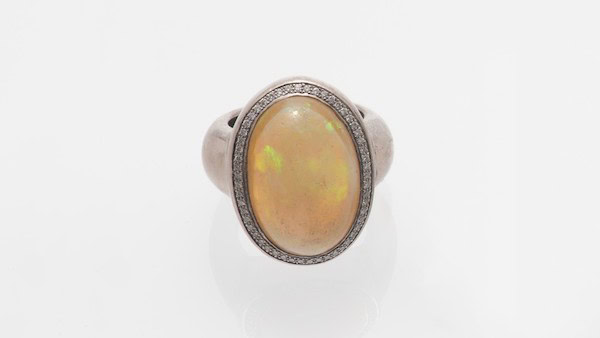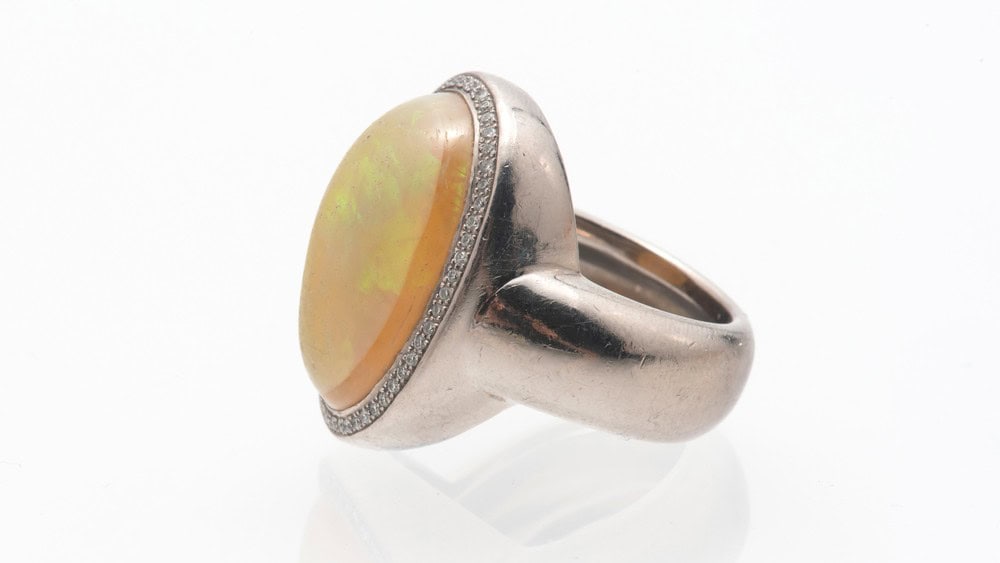
‘Thirsty’ opal
By Dr. W. Zhou, first published in Facette 29 (May 2024)


Opal can be a very attractive and colourful gemstone. However, some opals, and especially certain samples from Ethiopia (but also from other sources) may show hydrophilic properties, thus absorb and release liquids (mostly water or even humidity in the air) to some extent. This may cause stress (cracking), colour shifts (more brownish or in this case milky whitish), and dullening and reduction of the play-of-colour effect (see also SSEF Facette 2014, page 15). Our testing confirmed that this opal in the ring had hydrophilic properties.
There is a simple test to find out if an opal has such hydrophilic properties and as a consequence may change in appearance (and weight). For this, first the weight of the opal is measured with a high-precision carat balance, then the stone is immersed for about 5 minutes in water before measuring again its weight with the balance. Hydrophilic opals will have after this test a higher weight, as part of the water has been absorbed by the opal during the immersion. Over time, the opal will slowly dry out and the weight will again go down. Interestingly, such hydrophilic opals even change their weight (slightly) just by changing air humidity conditions (precise balance required!). So, if you weigh your opal over several days and always have a slightly different weight, it could be a strong indication of a hydrophilic behaviour of your stone.
On a SSEF report, such hydrophilic behaviour is mentioned. In case a strong change of weight occurred, the stone is identified as hydrophane opal. If only a slight change of weight was detected, then the hydrophilic behaviour of the opal is only mentioned in the comments section of the report.


